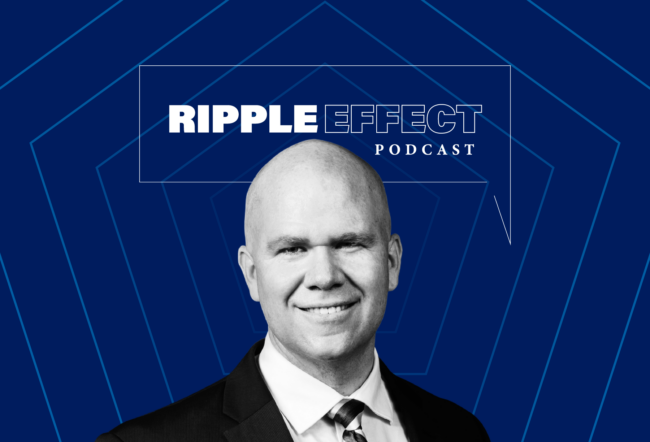While Asian entrepreneurs are eager for venture-capital investments from firms in the United States and Western Europe, and Western investors are ready to enter the booming Asian economies, for now the two sides often circle each other warily or, at best, proceed awkwardly.
That’s because venture investing in the region has hardly grown past infancy, said members of a panel on venture capital and entrepreneurship at last month’s Wharton Asia Business Conference. “There’s no history, no culture, of venture capital investing in Asia,” stated Raffi Amit, Wharton professor of management and entrepreneurship. “Asian entrepreneurs are not too familiar with the practices and norms that U.S. venture capitalists expect.” And Western VCs, for their part, often don’t take the time to educate the entrepreneurs or to develop the sorts of personal relationships that are still highly valued in many Asian countries.
“Doing business in Asia takes a long time,” added Hendrik Susanto, a San Francisco-based principal with IDG Ventures. “One deal I worked on while I was at Goldman Sachs – an investment in a hotel – took 20 years. The person who brought the deal to Goldman had known the founder back in the ’70s … In the U.S., things get done quickly. VC investing is easier and faster. It takes more time in Asia. You have to have patience and persistence. You have to pursue and establish trust.”
The lack of a venture capital history and long-term relationships can lead to misunderstandings. Asian entrepreneurs, for example, sometimes assume that VCs are just a piggybank rather than a business partner, said Amit, who also chairs the board of the Korean Global IT Fund, a $100 million investment pool sponsored by the Korean government. Likewise, they often misinterpret standard operating procedures.
Consider term sheets, the legal agreements that venture investors use to lay out the conditions for their investments. “Some of the clauses are perceived by Asian entrepreneurs as offensive,” Amit said. They interpret the contracts as a sign that the investor doesn’t trust them rather than as a normal means of doing business.
Similarly, some Asian entrepreneurs don’t understand why venture capitalists want to be heavily involved with their companies, checking in weekly and participating in board deliberations. “The entrepreneurs say, ‘What? You don’t trust me?’” Amit said. “It’s not a matter of trust. It’s a matter of creating a whole that’s greater than the sum of the parts. The VC has been in this movie many, many times before. He can help open doors to potential customers and recruit professionals. He can do all sorts of value-added activities.”
Amit has heard the objection that Western investors should have more respect for local norms. But that won’t work, he said, if Asian companies aim to raise money in the global capital markets, which remain concentrated in the United States. “If the objective is to bring those companies public in America, there needs to be a process by which American norms and standards – things like GAAP accounting – are adhered to.”
Of course, not every Asian entrepreneur needs to have his hand held by an American venture capitalist. Richard Lai, founder and managing director of dollarDEX, an online money-management company based in Singapore, pointed out that many Asian business people have ample experience in the United States and are thus capable of such tasks as recruiting their own American accountants. Lai, for example, earned undergraduate and graduate degrees at the Massachusetts Institute of Technology and has done graduate work at Wharton. “More sophisticated entrepreneurs don’t necessarily need their VC to tell them about GAAP,” he said. “But the owner of a sugar plantation might.”
When Lai and his partners went looking for money, they didn’t care about the venture investors’ expertise. They wanted their money. “All the venture firms will tell you that they are in it for the long term and that they are your partners. But what it boiled down to for us was valuation, so we picked an Asian venture firm” over Goldman Sachs, Lai said.
Singapore isn’t typical of the rest of Asia. English is widely spoken there and the country’s per-capita gross domestic product equals that of nations in Western Europe. The government is currently pushing development in several technology-related sectors. “You’re just as likely to be funded there as you are here,” Lai pointed out. “In a sector that’s part of a government initiative, like biotech, you’ll do extremely well. In addition, Singapore is a very strong U.S. ally, so there’s an easy flow of talent back and forth.”
Elsewhere in Asia, finding experienced executives to run technology companies remains a challenge. In Japan, for example, many entrepreneurs are serving as CEOs for the first time, said Jun Hosoya, a venture partner with Apax Globis Partners & Co. in Tokyo. “Unlike the U.S., we can’t just pick investments based on which companies have experienced management. We have to keep up with how our entrepreneurs grow as they build their businesses.” Susanto agreed. CEO talent does exist in Asia, but “there is more of it in the West. VCs have to work with the entrepreneurs and help educate them.”
Another obstacle is that the region doesn’t have the same strong flow of deals that American investors are used to, although that should soon change. “In the U.S., it’s wise to identify an area for your investment focus,” Hosoya noted. “But in Japan, it’s not a good idea to concentrate on a single sector because there aren’t enough deals.”
The paucity of deals is the reason Jiro Suzuki’s fund – Malaysian Debt Ventures Berhad – lends money rather than investing it. Suzuki compared his outfit, which is sponsored by the Malaysian government, to Silicon Valley Bank, a California lender that specializes in working with technology companies. “VCs require a very high return and need to exit in three to five years,” he said. “But three-fourths of the companies in Asia don’t fall under the VC model. Their profitability isn’t high enough. They’re sustainable, but they’re not qualified for VC funding.”
Even so, Suzuki pointed out that the early stages of the capital markets in Asia offer an opportunity for investors. “The total number of VCs in Malaysia remains less than 200. [Venture capital] is still in its infancy. But to do business there, to do business anywhere in Asia, you have to understand and respect the local culture. You can’t just push your own ways. What works in the United States or Europe or Japan doesn’t necessarily work in Malaysia.”



